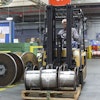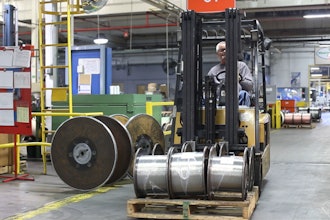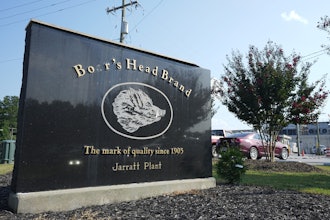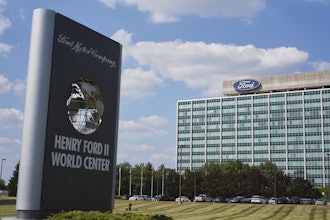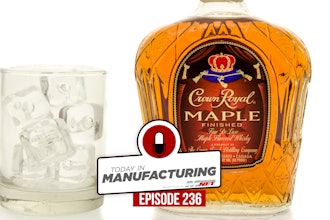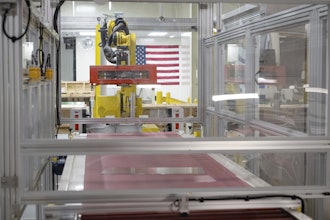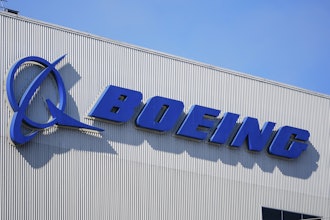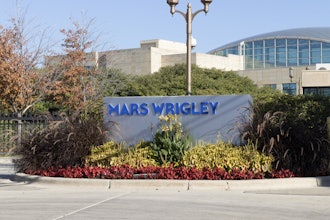WICHITA, Kan. (AP) — Cattle feeders in the U.S. are coping with reduced herds and high corn costs in part by increasing their use of growth-inducing drugs designed to bulk up animals, get more pounds of beef from each carcass and circumvent the drought's withering effects on the food cycle.
Accelerated use of the drugs, known as "beta-agonists," is defended by producers who say they are essential to withstanding the drought and their pharmaceutical creators who insist the additives are safe. But their use is drawing new scrutiny both at home and abroad, especially now that Russia and other key markets for U.S. beef have banned their use and some domestic producers worry about the additives' potential effect on beef tenderness and flavor.
In February, Russia joined the European Union, China and other countries banning the import of beef raised on the additives.
The United States — which along with other countries such as Mexico and Canada which allow the supplements — blame politics, not food safety fears, for the export bans. But some U.S. consumer groups are also taking notice. In December, the Center for Food Safety and the Animal Legal Defense Fund filed a petition with FDA urging the agency to conduct comprehensive studies on the long-term effects of human consumption and animal health.
Initially used to treat respiratory ailments in humans, the additives — fed to livestock in the last days of their lives — are mixed in with normal feeds and work at a cellular level to more efficiently convert the feed's nutrients into lean muscle instead of fat. Their use has fueled annual increases in carcass weights that result in larger cuts of meat in stores — a pharmaceutical end-run around a drought that has not only driven up the cost of feed grains but has forced cattlemen to sell off their livestock.
Statistics kept by the Agriculture Department prove what consumers are seeing: In 2000, the average fed carcass weight was 772 pounds. By 2011, with the use of beta-agonists picking up speed, weights had grown to an average 816 pounds. During the 2012 drought the average beef carcass weighed 835 pounds.
"Drought and tough times makes a producer use all technology that is available," CattleFax analyst Kevin Good said.
The U.S. Food and Drug Administration has approved two beta-agonists: ractopamine, marketed for cattle under the brand name Optaflexx by Elanco Animal Health; and more recently zilpeterol, sold under the brand name Zilmax by Merck Animal Health. The more potent zilpeterol has been available in the United States for cattle since 2007.
While hormone implants have been widely available to cattle producers for decades, newer technologies like beta-agonists did not become commercially available in the U.S. until 2004 after ractopamine was approved for cattle. FDA approved ractopamine for pigs in 1999.
The federal government considers them safe, and their makers contend the additives increase productivity and have no noticeable effect on the beef's taste if producers follow feeding guidelines.
When corn was cheap, feedlot operator Steve Landgraf could afford to feed enough grain to his cattle and he only put in one time-released growth hormone implant in each animal's ear to help them gain weight. The drought has him inserting two hormone implants in the ears of each animal that comes into his Lakin Feed yard in southwest Kansas — plus he is now feeding them beta-agonists. While those drugs cost a lot of money, he says he can afford to spend a little more for them when feed grain costs are so high.
"We are feeding the cattle less corn and making them bigger," Landgraf said.
Cattle fed ractopamine reach slaughter weight eight days earlier than those who do not get the supplements, each animal consuming an average 2.3 fewer bushels of corn, according to study prepared by Global AgriTrends, a private agricultural analysis firm.
If beta agonists were removed from the 70 percent of U.S. cattle which are now estimated to use them, it would require an additional 41 million bushels of corn to beef up cattle for slaughter. Removing it from the 90 percent of pigs grown on the supplement would require another 50 million bushels. That is not a significant amount of corn for most years, but that amount taken out of last year's drought-plagued corn production would have reduced estimated ending stocks to the lowest level in history, Global AgriTrends said.
In June, Cargill Beef became one of the last major meatpacking companies to accept cattle fed beta-agonists at its slaughterhouses — despite its earlier misgivings stemming from its own research finding that there can be "a negative impact overall beef quality" on marbling and tenderness if "best production practices" are not followed. Without the policy change, the company would not have been able to buy enough cattle to keep its plants running and meet customer commitments. An estimated 70 to 75 percent of U.S. beef cattle are fed such growth promoters, Cargill spokesman Michael Martin said.
"While Cargill has not completely embraced the use of growth promotants due to the potential resulting lower quality of meat, the vast majority of the beef cattle we harvest come from third party ranchers and feedlots that we have little control over," the company said.
Merck and Elanco both contend their beta-agonists feed additives are safe and help producers optimize productivity with no noticeable effect by consumers on beef quality.
But Michael Hansen, senior scientist at the Consumers Union, which publishes "Consumer Reports" magazine, disagrees.
"It makes meat unpalatable," Hansen said. "These steaks get so large, the meat gets so tough."
Advocates of their use say other international markets allow in U.S. beef raised on the additives, noting Taiwan last summer agreed to adopt international standards for ractopamine residues in a move that cleared the way for beef exports from the U.S. But Taiwan still bans ractopamine from pork imported into the country. Critics contend that contradiction is more about protecting that country's pork industry. Taiwan doesn't have a domestic cattle industry.
Brett Stuart, a founding partner of Global AgriTrends, contended those trade impact estimates are overblown because the beef Russia doesn't buy is either sold domestically to U.S. consumers or to other countries. He estimated the actual market impact of the closure of the Russian market to be closer to $2.84 per head in value.
Back home, producers fear the additives may create a reputation for producing tougher beef by sharply reducing the marbling that keeps meat tender when it's cooked.
The marbling adds essential fats and thus flavor, and the criticism troubles John Stika, president of Certified Angus Beef, a group owned by the 30,000 members of the American Angus Association. He says the additives are safe, but he's concerned their potential effect on taste could eventually hurt consumer demand.
"We have concerns about anything that jeopardizes our brand's ability — and even our industry's ability — to deliver upon that promise of taste that consumers use as their primary purchasing decision on, 'Should I buy beef or should I buy pork or poultry,'" Stika said.
